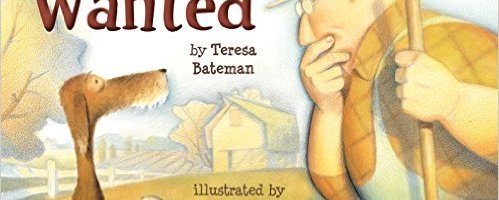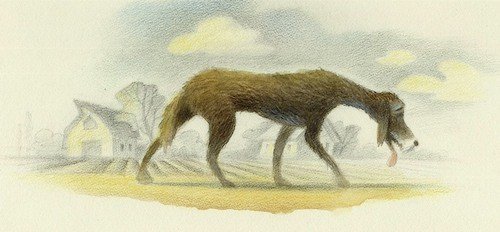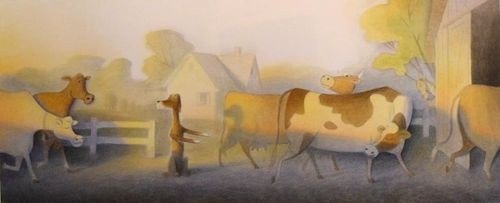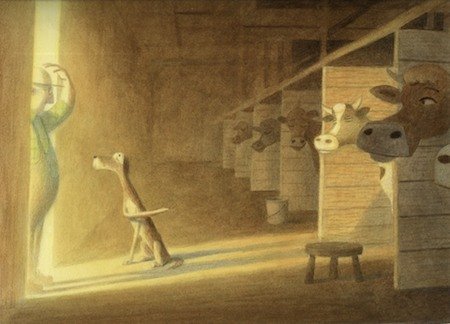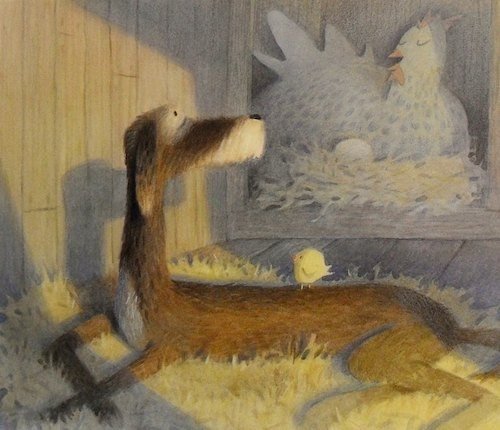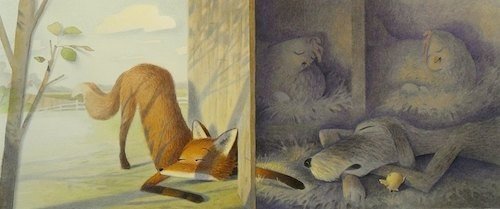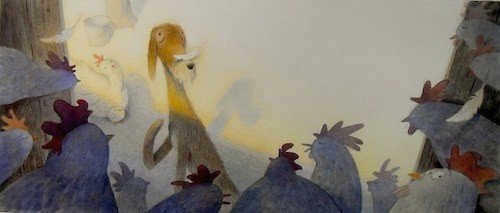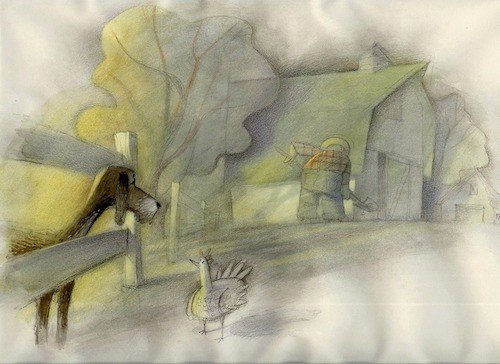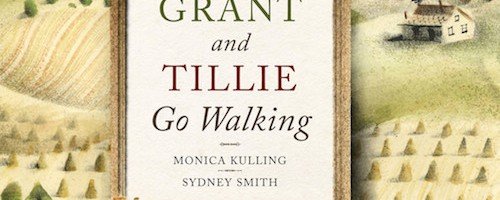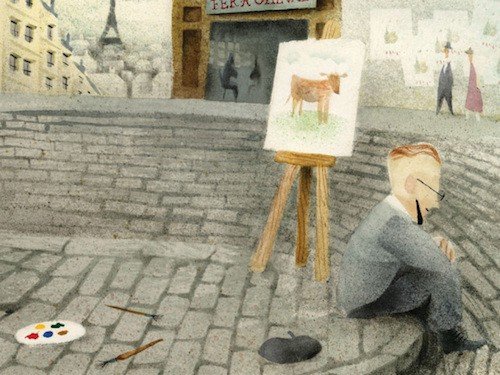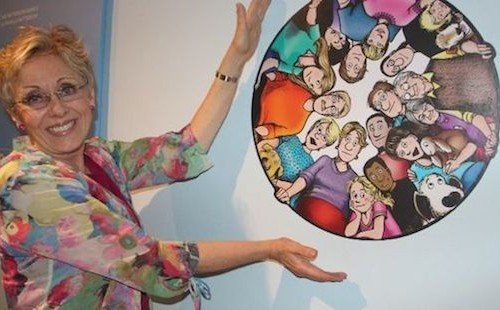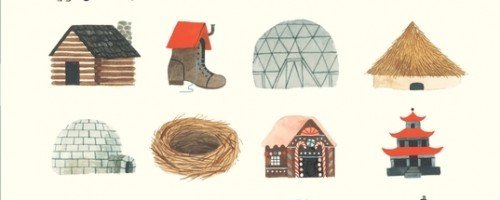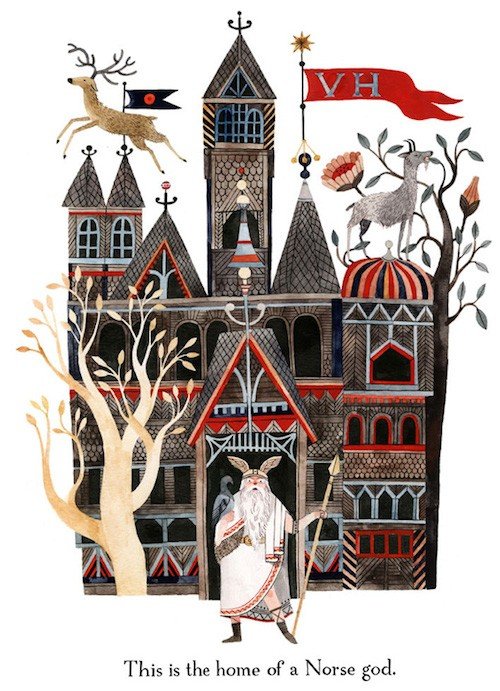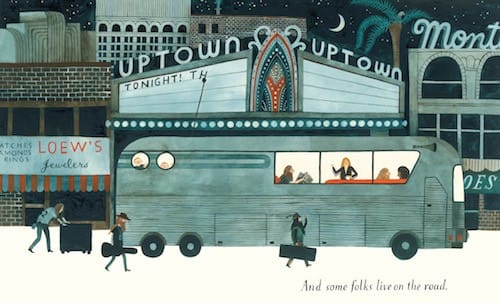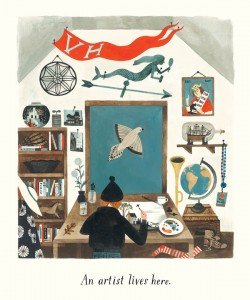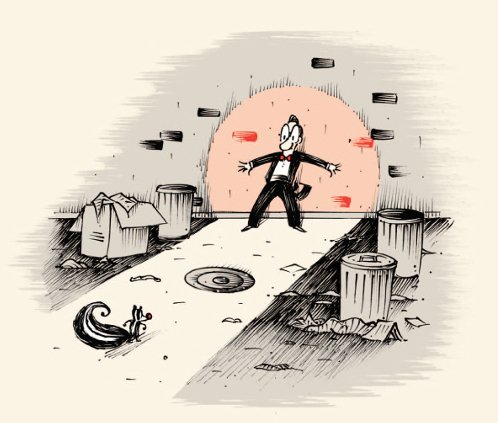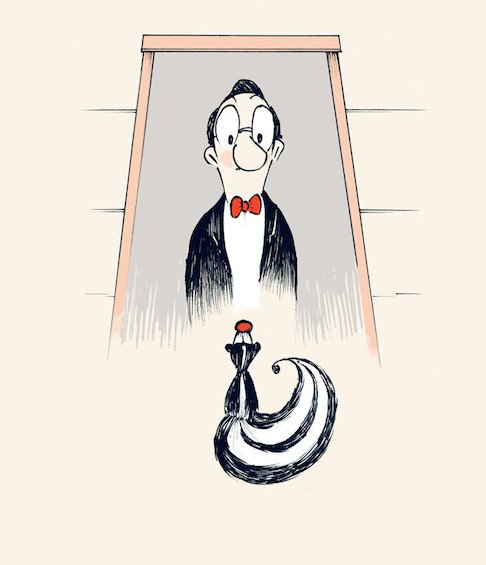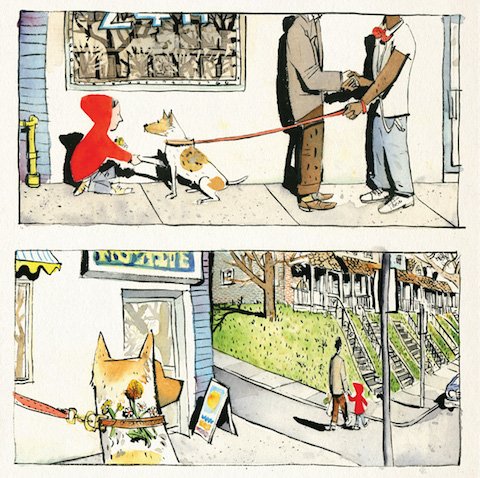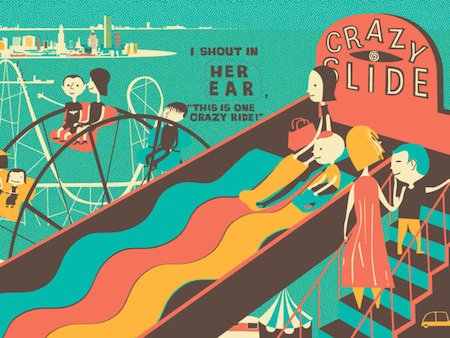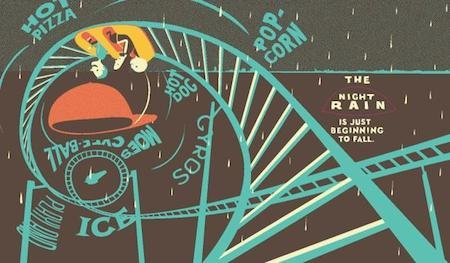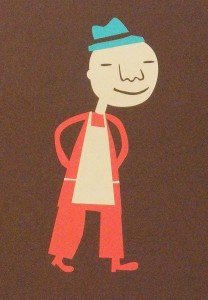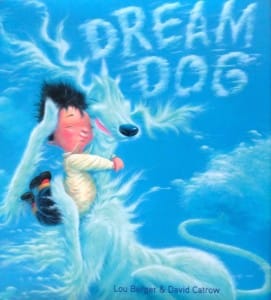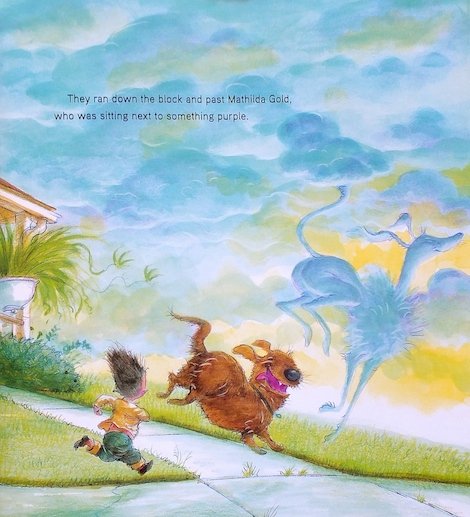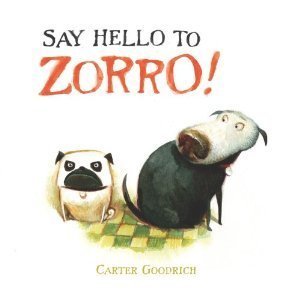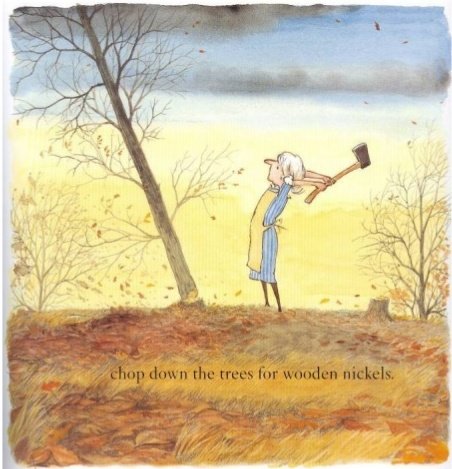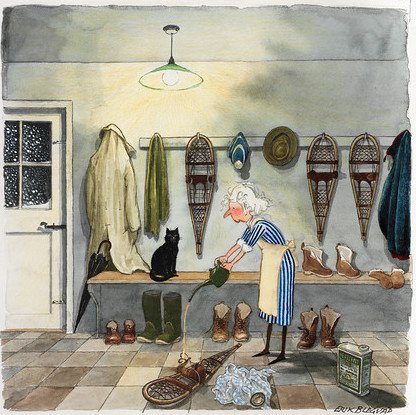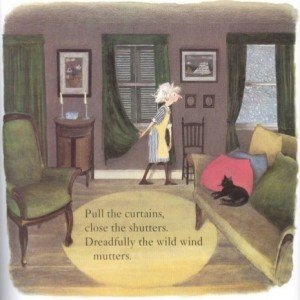I’ve been meaning to write about the wonderful illustrator Chris Sheban for some time now, almost fourteen years, although in my indefensible defense I’ve only had this blog for five of those fourteen years, and I have a lot of books.
I first came across Sheban’s work at a Washington, D.C. bookstore. It was a tall and slender book called The Shoe Tree of Chagrin, and it remains one of the best and most beautiful ‘finds’ of any trip I’ve experienced, which of course always includes a visit or two to a bookstore. One day I will write about that marvel of a book, but for now I have fallen mightily for a dog. A dog in search of a job.
In Job Wanted, written by Teresa Bateman, an old dog must prove his worth to a farmer. It’s not stated why the dog is homeless, but suffice to say, he is an experienced farm dog with an empty belly, an imaginative mind and a willingness to do whatever it takes, including impersonating a cow. The farmer is not convinced, believing that dogs “just eat, and don’t give anything back”. (Clearly, this farmer has never owned a dog.)
“Do you have an opening for a cow?” the dog asked.
“Well sure. But, you’re not a cow.”
“We’ll see about that,” the dog said. “I’ll start work tomorrow.”
The next day, the dog prepares the cows for milking and the farmer is able to finish the job “in jig time”. Bateman uses this idiosyncratic turn of phrase several times, indicating that the dog’s helpful acts are having their intended effect. Following a confrontation with a fox, the farmer calls the commotion a “foofaraw”. These expressions are a nice bit of characterization, deepening the homey, mid-western feel of the book.
Wordplay is one of the many pleasures in Job Wanted, accentuated by Sheban’s magnificent watercolour, graphite and Prismacolour pencil illustrations. The Grant Wood-esque landscapes are rendered in sparse detail, allowing Sheban to direct his wondrous imagination to the farmer, the farm animals, and most impressively, the dog. With his grey-flecked snout, plaintive expression, and gangly body, we fall for the old mutt immediately. Surely he has proven his worth just by being so darn lovable? Well, as we learn, farm dogs must earn their keep. It is not enough to be cute (speaking for the farmer, because in my canine world being cute is more than enough).
Author and illustrator extract the maximum amount of humour, charm and pathos from this story of a dog who is not so much looking for a job as a home. It’s a testament to my investment in this story, and to dogs in general, that I experienced a fair amount of anxiety waiting for the farmer to accept this mutt into his life, and when it finally happens, it’s truly a lovely (and cathartic) moment.
Sheban’s illustrations are like opals – soft and deep and ever-changing. Sometimes you see the blue, sometimes the gold, but every colour is present, if variably expressed. A translucent glow lifts the tones, 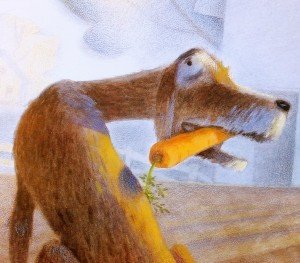 bathing each wash of colour and pencil stroke in morning light. While it’s easy to be charmed by Sheban’s great warmth and humour, each illustration stands on its own as a thing of beauty – from the bespectacled farmer to the fat hens, and most of all an old hound dog who still has a few tricks up his hairy sleeve. If you’ve ever loved a dog, or needed a job, or worked on a farm, or if you just plain love funny, exquisitely illustrated picture books, then I would highly recommend that you pick up Job Wanted…in jig time.
bathing each wash of colour and pencil stroke in morning light. While it’s easy to be charmed by Sheban’s great warmth and humour, each illustration stands on its own as a thing of beauty – from the bespectacled farmer to the fat hens, and most of all an old hound dog who still has a few tricks up his hairy sleeve. If you’ve ever loved a dog, or needed a job, or worked on a farm, or if you just plain love funny, exquisitely illustrated picture books, then I would highly recommend that you pick up Job Wanted…in jig time.
Chris Sheban grew up in Boardman, Ohio, attending Kent State University followed by several years of graduate work. He has been awarded three Gold and three Silver Medals from the Society of Illustrators. Watch these pages (all 32 of them) for reviews of The Shoe Tree of Chagrin, and a couple of other Sheban beauties in my collection: The Story of a Seagull and the Cat Who Taught Her to Fly and Catching the Moon. Chris lives in Chicago, Illinois.
Teresa Bateman is a school librarian, dog lover, storyteller and the author of many wonderful stories and poems for children. Her book Keeper of Soles is an ALA Notable Children’s Book.
Job Wanted by Teresa Bateman, illustrated by Chris Sheban. Holiday House, 2015.
